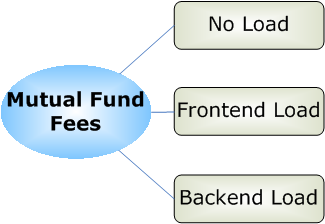Submitted by admin on

Mutual fund fees can be complicated and we want investors to know that we're here to help.
I am here to tell you that there are no “dirty little secrets” when it comes to mutual fund fees. To avoid over paying fees, investors need to know the right questions to ask and that starts with understanding the fee structure.
The main mutual fund fees commonly paid by Canadians are sales charges and ongoing fund fees. Seems pretty straight forward right…wrong. These two charges come with a lot of baggage and it’s important for investors to first understand the different fee options when purchasing mutual funds.
The first fees when purchasing mutual funds are sales charges. These charges are transaction-based fees paid directly by investors either at the time they buy the fund or at the time they exit or redeem from the fund. It all depends on the fee option selected: front-end, back-end or deferred. The deferred option or DSC seems it be the one that causes the most confusion for investors. DSC is like purchasing a back-end fee, but the difference is the longer the investor holds the investment the less the redemption cost and that cost can even become void after a certain amount of time. This is known as the “redemption schedule”. Investors should pick the fund option that best meets their investing needs.
Let’s move on to the more complex fees called ongoing fund fees. These fees are paid indirectly from fund assets and cause the investor’s net returns to decrease. When it comes to ongoing fees, an important acronym to remember is MER. A mutual fund’s management expense ratio or MER tells investors the costs of operating and distributing a mutual fund. The MER is the total of a mutual fund’s annual operating costs expressed as a percentage of the fund’s average assets for that year. In Canada, the MER is made up of two major components: management fees, and operating expenses.
A management fee that many investors don’t seem to know about is trailing commissions which can give the impression of a “dirty little secret” banks hide from investors. A significant portion of the management fees earned by most Canadian mutual fund manufacturers on the mutual funds they manage is used to pay an ongoing commission to dealer firms. This is referred to as the “trailer fee” or “trailing commission” embedded in the management fee charged. Remember all investors pay management fees, even mutual funds sold on a no-load basis. MERs are clearly outlined in the prospectus investors are giving about the mutual funds. What’s a mutual fund prospectus?
The mutual fund prospectus will also have the operating costs listed and are commonly called administration fees. These costs are allocated to mutual funds as they are incurred and can fluctuate every year. The mutual fund manufacture determines this to be part of operating costs to manage the mutual funds.
This information is not meant to deter you from investing in mutual funds, but rather to help you make smart investment decisions. The main point I hope you take away from this post is, if you’re looking to invest in mutual funds, know the fees before you agree. The information for this blog post was provided by the Canadian Securities Administrators (CSA) Discussion Paper and Request for Comment 81-407 on Mutual Funds
Please take the time to read this document as it explains everything I talked about in great detail. If you have questions, we’re here to help. Go to our contact us page.
